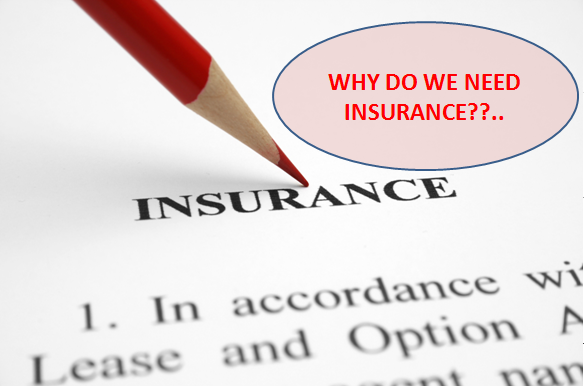Facts About Pacific Prime Revealed
Facts About Pacific Prime Revealed
Blog Article
The Pacific Prime Statements
Table of ContentsAn Unbiased View of Pacific PrimePacific Prime for BeginnersPacific Prime - TruthsThings about Pacific Prime
In a lot of states, the insurer is required to send you a copy of the changes to your plan. It is necessary that you review Recommendations or Cyclists so you comprehend exactly how your plan has changed and if the plan is still ample to satisfy your requirements. To get a duplicate of your insurance plan, please contact your insurance policy representative or firm.
The Institute of Medicine (IOM) Board on the Consequences of Uninsurance launches a prolonged assessment of proof that addresses the value of health insurance coverage with the publication of this record. Insurance coverage Matters is the initial in a collection of six reports that will be released over the following two years documenting the fact and consequences of having actually an approximated 40 million people in the USA without medical insurance protection.

Some Known Questions About Pacific Prime.
The goal of this series of research studies is to redouble policy attention on a longstanding issue. Complying with the lengthiest financial growth in American background, in 1999, an approximated one out of every six Americans32 million adults under the age of 65 and greater than 10 million childrenremains without insurance (Mills, 2000).

Ten percent of the populace represent 70 percent of healthcare expenses, a connection that has actually continued to be constant over the previous three years (Berk and Monheit, 2001) - expat insurance. Hence health and wellness insurance proceeds to offer the function of spreading out danger also as it increasingly funds regular care. From the point of view of healthcare providers, insurance policy brought by their individuals assists secure an earnings stream, and areas profit from economically feasible and stable health care specialists and organizations
Federal government supplies medical insurance to populations whom the private market might not offer successfully, such as impaired and seniors, and populaces whose accessibility to healthcare is socially valued, such as children and pregnant females. The utmost ends of medical insurance protection for the private and areas, consisting of workplace areas of employees and companies, are boosted health results and high quality of life.
The Of Pacific Prime
Staff members rank medical insurance first without a doubt in importance amongst all the benefits used in the workplace (Salisbury, 2001). Although there have actually been substantial investments of personal and public funds to provide wellness insurance, lots of people still have no protection. Despite comprehensive coverage of study findings and health and wellness care research study results, the public stays baffled and misinformed regarding Americans without medical insurance and the effects of doing not have insurance coverage.

Without inquiry, the complexity of American wellness care funding devices and the riches of resources of details add to the general public's complication and skepticism regarding medical insurance stats and their interpretation. This record and those that will adhere to goal to boil down and offer in easily understandable terms the considerable research study that births on concerns of medical insurance coverage and its relevance.
Fifty-seven percent of Americans surveyed in 1999 believed that those without medical insurance are "able to get the treatment they require from doctors and health centers" (Blendon et al., 1999, p. 207). In 1993, when national interest was concentrated on the troubles of the uninsured and on pending healthcare regulations, just 43 percent of those polled held this belief (Blendon et al., 1999).

They additionally get less preventative services and are less likely to have routine care for chronic problems such as hypertension and diabetic issues. Chronic conditions can bring about costly and disabling problems if they are not well taken care of (Lurie et al., 1984; Lurie et al., 1986; Ayanian et al., 2000). One nationwide survey asked more than 3,400 adults about 15 very severe or somber conditions.
Not known Facts About Pacific Prime
Additional proof is offered later in this phase in the conversation of insurance coverage and accessibility to healthcare. https://pacificpr1me.blog.ss-blog.jp/2024-04-03?1712088442. People without health and wellness insurance are young and healthy and balanced and choose to do without coverage. Almost fifty percent (43 percent) of those surveyed in 2000 thought that individuals without health and wellness insurance policy are more probable to have illness than people with insurance
Voters and policy makers in focus team discussions define those without insurance as young individuals that have the chance to be covered and feel they do not require it (Porter Novelli, 2001). Contrasted to those with at the very least some exclusive insurance coverage, the without insurance are less most likely to report being in outstanding or very good health and wellness (Company for Medical Care Research Study and Quality, 2001).
RESOURCE: Center for Price and Financing Studies, Agency for Health Care Research and Top quality, based upon MEPS data. Youthful grownups in between 19 and 34 are even more likely to do not have medical insurance than any kind of other age group. This is chiefly because they are much less typically eligible for employment-based insurance policy because of the nature of their work or their short period in it.
The assumption that people without insurance coverage have better-than-average health and wellness follows from confusing the reasonably young age account of the without insurance with the better wellness, usually, of younger individuals. This obscures the web link between health standing and medical insurance. For those without access to work environment medical insurance, bad health is a prospective barrier to acquiring nongroup view it now coverage due to the fact that such insurance coverage may be highly priced, leave out preexisting conditions, or be just inaccessible.
Report this page